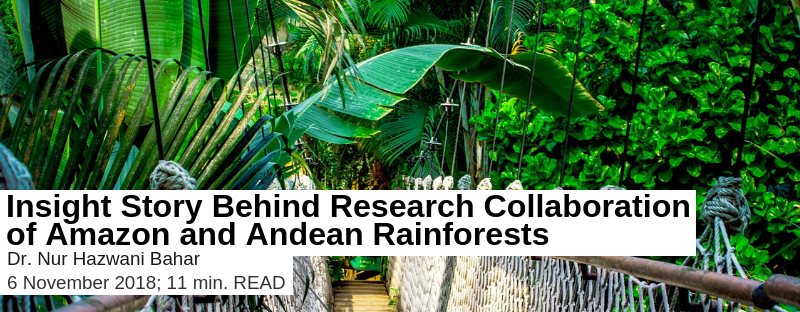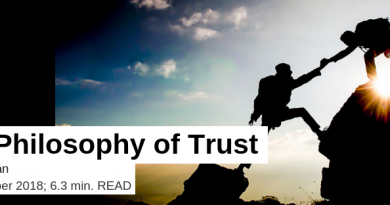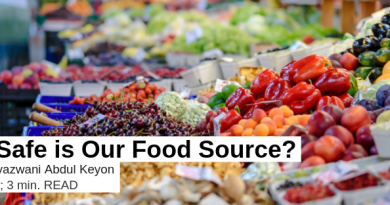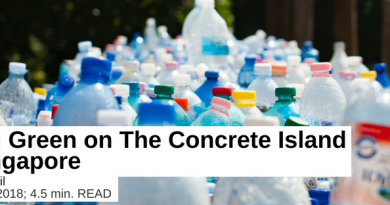Insight Story Behind Research Collaboration of Amazon and Andean Rainforests
Every publication has a story behind it, beyond what were captured and distilled in words and numbers.
For this edition, I want to share with you the story behind my first research publication, which consumed a huge portion of my PhD life. Because it is a story, it is slightly long winded unlike the usually concise, direct scientific piece. Therefore, I hope you can bear with me until the end.
I had great opportunity to get involved in a project called ‘Joint Amazon Carnegie RAINFOR Expedition’ (JACARE), which was a multi-institution scientific effort.
Scientists mainly from Australia, Peru, Brazil, UK and USA (and Malaysia) came together, bringing our expertise in our collective endeavour to better understand and quantify the biology of Amazon and Andean tropical forests. In general, data from tropical rainforests is lacking due to historical legacy – for decades Western scientists have focused on investigating their backyard. Fortunately, there is growing interest and funding in tropical forest research and coupled with advance in machines and methodology, we are able to unravel the complexity of tropical forests.
The team from my university, the Australian National University, led the investigation on leaf photosynthetic capacity along a 3,300-meter elevation gradient stretching from lowland western Amazon to the Andean tree line in Peru. To measure carbon and water fluxes between the leaves and the atmosphere, portable machines equipped with infrared beams were used. Just like a computer, this machine once was as huge as a caravan and now has been compressed to a portable cabin luggage-sized machine, which is a necessity for scientists working in the field. Our team collected tremendous amount of photosynthetic data. By the end of the field campaign, the team members moved on to other projects, went back to their home country or worked elsewhere.

That was when I came to the picture. I just started my PhD, I was super enthusiastic, not to mention full with energy, I also had prior experience using the machines, I understand the technical aspects of the measurement and I grew up in tropical environment – what can you say, I am, but a perfect candidate! The next thing I knew, I have been handed over the largest dataset ever collected on tropical forest photosynthesis.
Frozen leaves, brought back from Peru in liquid nitrogen were also given to me. Since I was trained in biotechnology, I have the necessary skills to process, extract and quantify the most important and abundant enzyme in the world – Rubisco (Interesting fact: seriously! Rubisco is the first entry point of carbon from the air so anything that has carbon i.e. the food we eat, the leaves we obtain oxygen from has to go through Rubisco during photosynthesis).
Things were very promising at the beginning. I learnt a lot about tropical forests in Peru, the effect of atmospheric pressure on carbon diffusion, temperature and nutrient impact on enzyme activities, which sets of kinetic constants we should use for quantifying photosynthesis at different temperature etc. While learning all these concepts and their impact on my data, I also had to hone my lab skills and somehow try to extract enzymes from tropical leaves, which just happened to have all the nasty stuffs like tannin, and secondary metabolites that prevent me from extracting enzymes and proteins from the leaves. Oh, shall I mention about having to learn mix-effect model? With the impressive amount of data we have, we want to come up with a simple equation that can be used to predict photosynthetic capacity in tropical forests, constructed using our data as reference. This requires using all variables we have – leaf photosynthesis, leaf nutrient, temperature, soil nutrient, leaf structure etc in our starting model and gradually trimming the variables down to only significant variables. I lost track on how many models we ran and how many we had to discard. On top of this, I was busy communicating with our collaborators around the world mostly via emails and skype meeting. PhD life was challenging and fun for me.
Then something weird happened. I began to feel overwhelmed and full of doubt. I started to question my capability in synthesizing the unbelievable amount of data and information. I also doubted my ability to represent the long list of well-respected, high profile scientists (mostly professors) that had contributed to the project. The most torturing part for me was huge expectation placed on me by my supervisors and colleagues. I was scared of letting them down and I fall into the ‘imposter syndrome’ trap; I was afraid in case someone found out that I am a fraud and that somehow I managed to deceive everyone into believing that I can deliver the output for this project.
All these internal conflicts translated into actions and changes in behaviour. I was not productive, I made stupid mistakes in my calculations, I avoided meeting with my supervisors, I came late to the office and on some days I couldn’t bring myself to the lab at all. Instead, I spent my days at home watching Korean dramas, or cooking Malaysian food. One way I coped with the rising expectation was to deliver less- I thought I could lower down the expectation bar if I underperform. Without realising, I conditioned myself to operate on mediocre mode instead of doing my best. It continued for a few months and I noticed that I was not liking myself.
In the midst of this chaos, my friend, Veronica convinced me to attend an international summer course on Forest Ecophysiology in Park Katalapi, Chile. Veronica visited my family in Johor and she insisted that I visit her family and friends in Chile and attend the course. I had a big fight with my supervisor about going to Chile since he thought I was not making enough progress in my PhD and my trip to Chile was a distraction. I was stubborn and bold enough to buy my return flight ticket to Chile before informing my supervisor- at this point, nothing will stop me from going to Chile!

My trip to Chile was a turning point in my PhD life.
In a different, new environment, I no longer felt the pressure to perform. In a most peculiar way, I was freed from meeting people’s expectations of me by simply being on my own. And because I knew how much the trip to Chile costs me, I wanted to get the most out of this trip and maximize my return of investment. So, I gave my all – I participated actively in class discussion, I volunteered to answer questions, I joined side activities and I made good friends with the Latinos and Latinas by speaking random Spanish words (credit goes to telenovelas I watched). The lecturers were impressed with my performance during the course that they decided to reward me with Excellence Award, an award given to the best student. I was happy and honoured to receive the award, although the most important thing for me is that I remember the taste and ecstatic feeling of having done your best, irrespective of the outcomes. What a good feeling!



I went back to Australia with renewed spirit and motivation. I just want to do my best and I hold on to my faith, believing that God does not burden a soul beyond that it can bear. I also learnt to trust my supervisors’ judgement on my ability to deliver. I started to approach my manuscript writing with more rational mind frame- it was already approaching draft version 20 with countless mixed-effect model re-runs. Whatever comments and modification I need to make on my manuscript, I incorporated them in with no bitterness and defensiveness unlike before. With 28 co-authors, you can imagine the substantial comments I have received – trust me, professors LOVE to give constructive feedbacks.
We submitted the manuscript to New Phytologist journal on November 2015. The manuscript went through two rounds of revision and was accepted for publication on May 2016 (finally!). Essentially, our study shows greater photosynthetic capacity in upland Andean forest leaves compared to lowland Amazonian leaves i.e. Andean rainforest breathes in more carbon than lowland Amazon rainforest. We found that leaf and soil phosphorus play a key role in controlling photosynthetic capacity of tropical wet forests. From frozen leaf materials, we discover that a substantial fraction of Rubisco of Amazonian trees is inactive. We hope that the data obtained from this study would be fed into climate models in order to reduce large uncertainty associated with carbon flux estimates in tropical rainforests.
I am very pleased to see that our publication has finally came out and passed rigorous test by experts in the field. Actually, I wanted to organise something like a baby shower for my publication, considering the amount of labour, sweat and tears (fortunately, no blood involved) that I poured in the making of this publication. Thanks to everyone who offered me your support and help during my journey- this paper is for you!
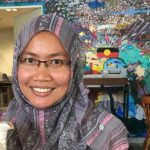
Dr. Nur Hazwani Bahar obtained her doctorate in plant physiology from the Australian National University. She inspires to safeguard tropical rain forest while enjoying good things in life.
Contact info: nur.abdulbahar@gmail.com

